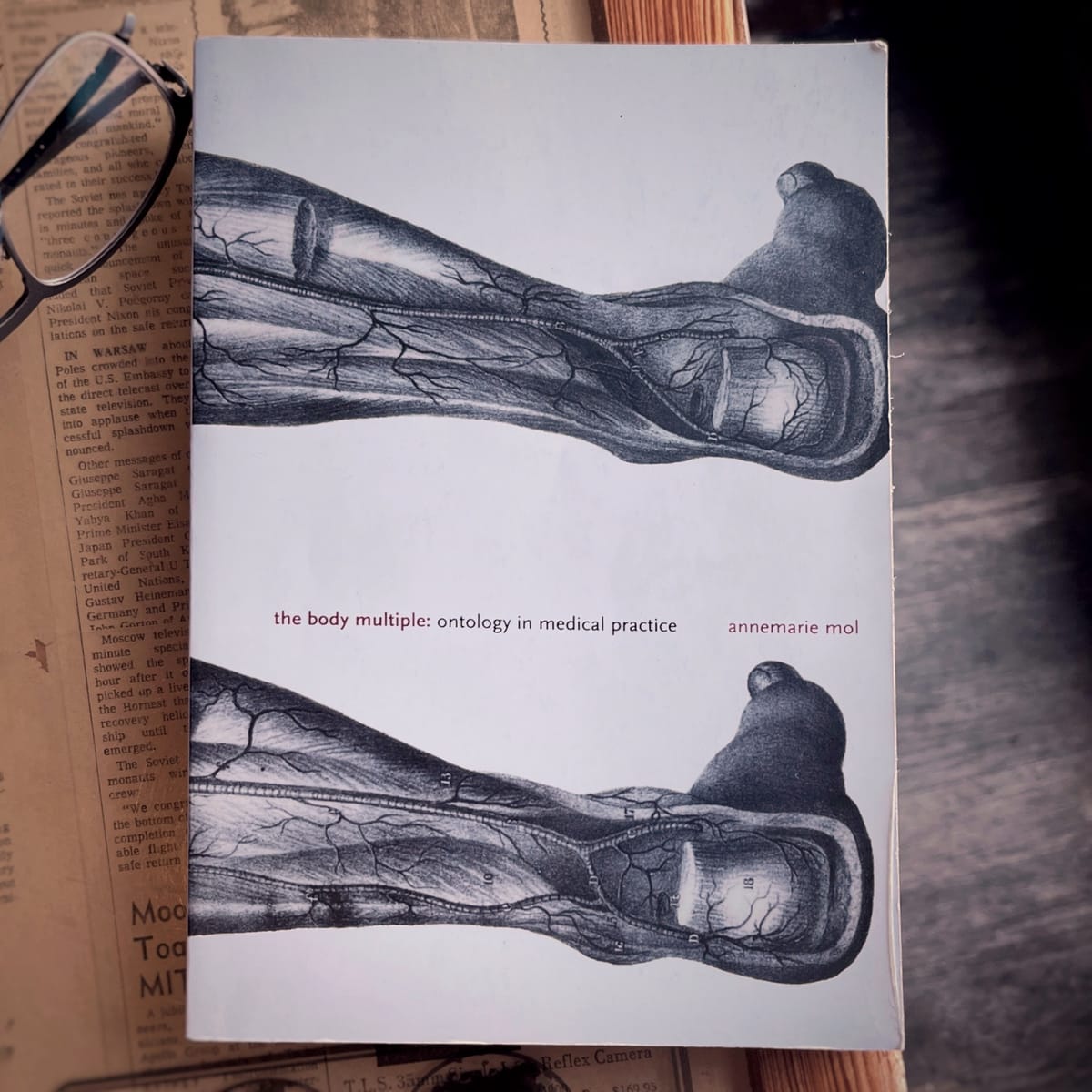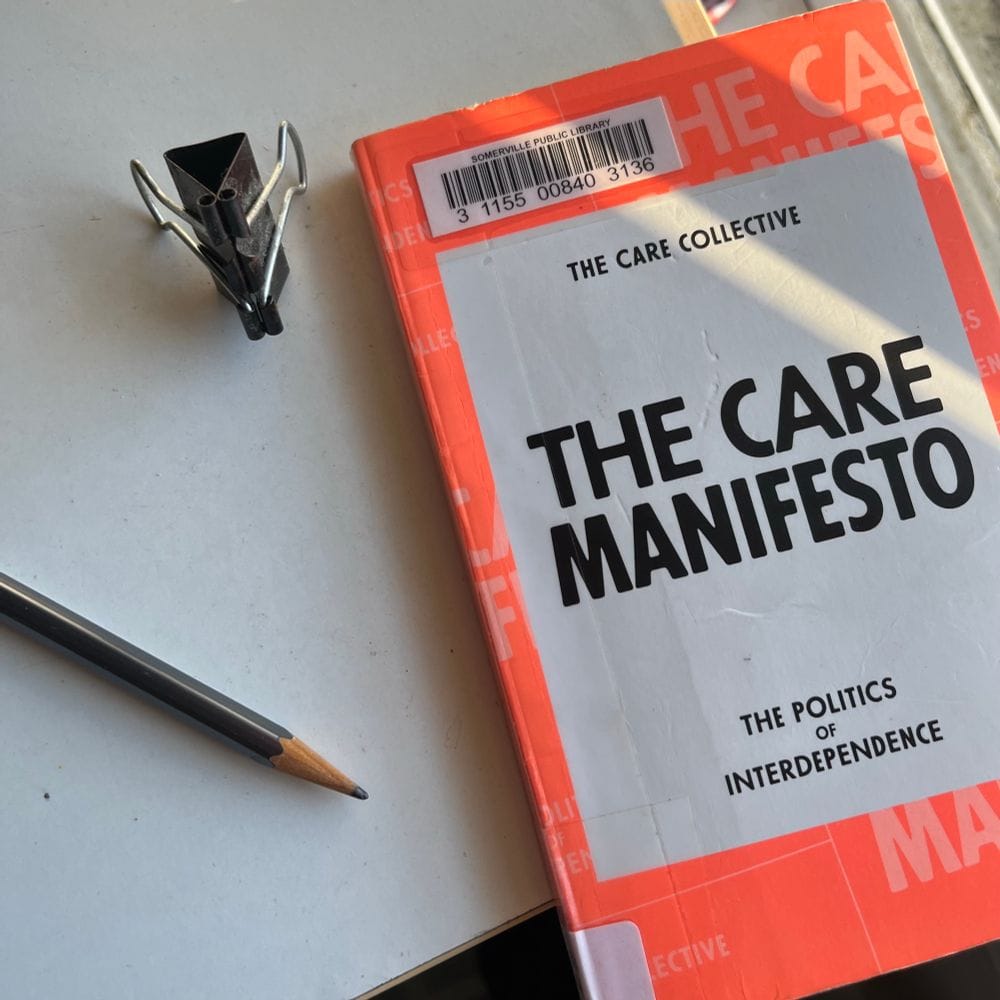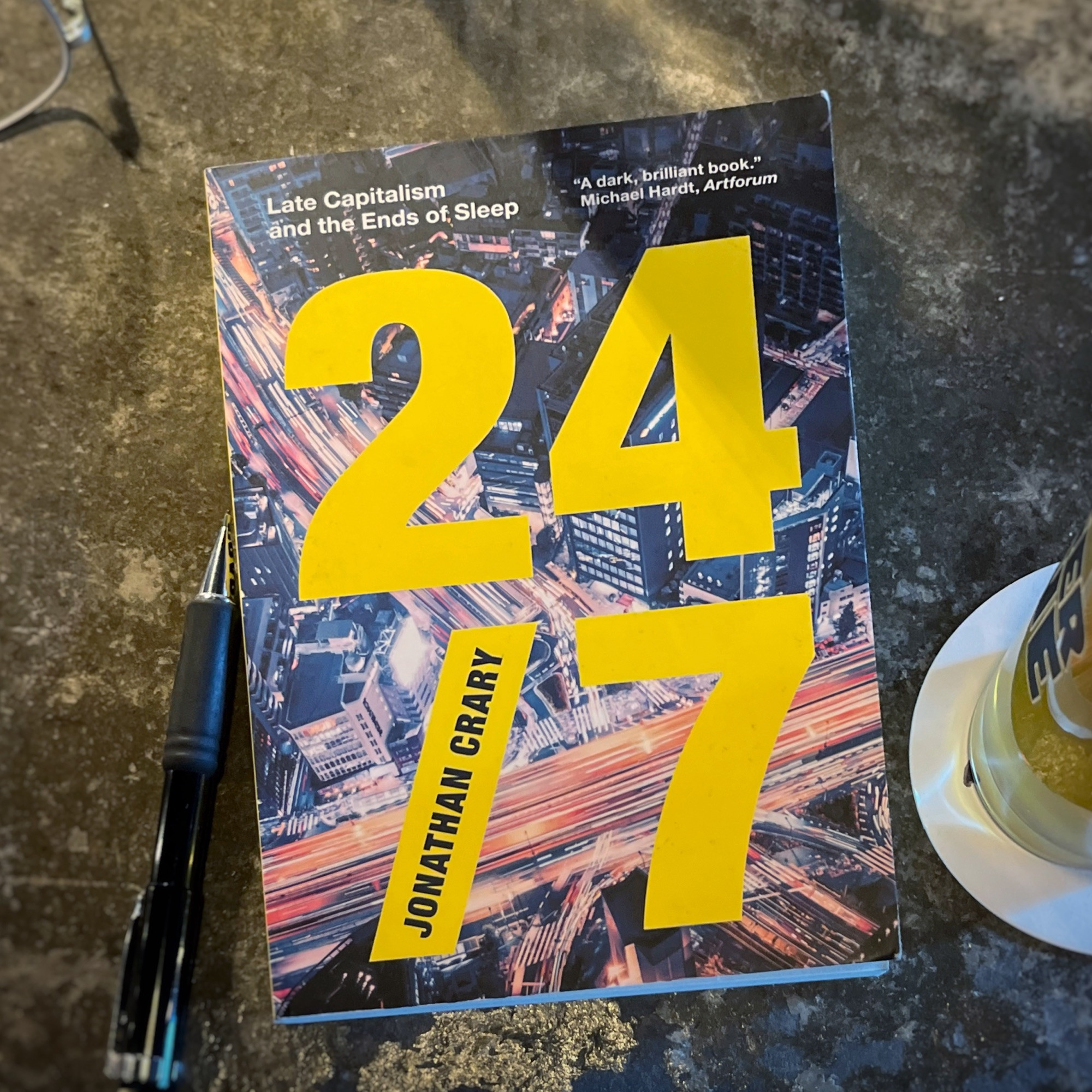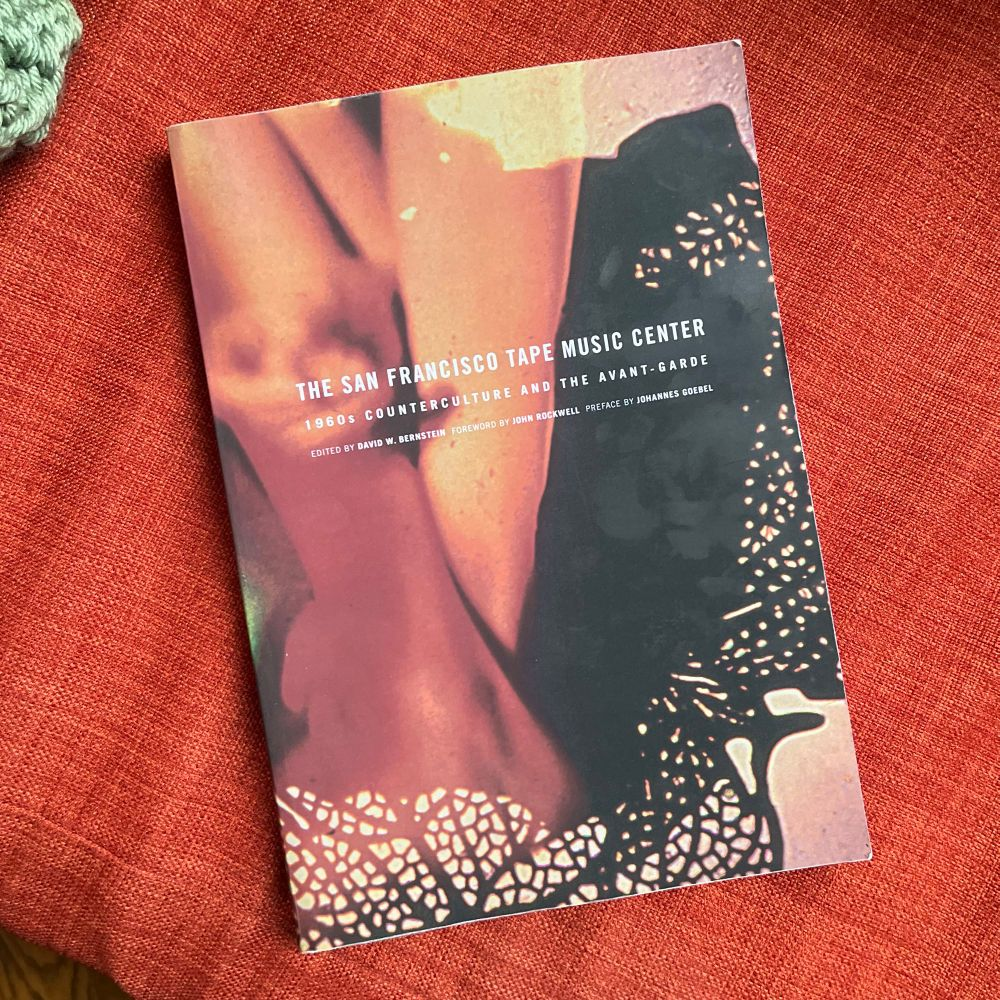Annemarie Mol's THE BODY MULTIPLE
88 notes

bluesky review:
⌘ A fascinating ethnographic hospital study, focused on "the techniques that make things visible, audible, tangible, knowable," ultimately concluding that the reality of disease is primarily produced via the enactment of practices
⌘ The "practitioners" in Mol's analysis can be experts (physicians, pathologists, lab technicians), but the complaints and observations of the patient also play a role, as do Latour-esque nonhuman agents ("Paperwork. Rooms, buildings. The insurance system. An endless list of heterogeneous elements.")
⌘ this resonates with the discourse around other aspects of reality that are similarly made manifest through practices—most obviously it connects to the way gender is now understood as a performed complex of material and immaterial elements. Long story short: Judith Butler is mentioned in this book
⌘ note that Mol is not saying that disease is not "real" or that it is "all in one's head," but she is saying that the way disease is diagnosed, measured, and treated is wholly contingent on the sometimes-contradictory cloud of practices surrounding it & thus best understood via praxiographic inquiry
⌘ also referenced: Barbara Duden's THE WOMEN BENEATH THE SKIN, which apparently looks at women's medical records from 1730 Germany and examines how dramatically "the experience of one's own physicality from the inside" can change in 300 years. "We simply couldn't do such a body any more." INTERESTING
Notes, oldest to newest.
1. Enactment as opposed to knowledge
2. More than one, but not fragmented
3. Medicine's "ontological politics"
4. Various approaches to building knowledge about the body
5. Sources of knowledge, styles of knowing
6. Objects in Mol's "empirical philosophy"
8. Attending to the multiplicity
9. Epistemological normativity vs ethnographic normativity
12. Generalizations about "the literature," in Mol
14. Talcott Parsons and medical sociology
15. The dangers of "perspectivalism"
17. Doctors as producers of knowledge
18. The problems of trying to "locate" your work within a discipline
19. Marilyn Strathern's work on kinship
20. Melanesian kinship networks
21. The future of family relations
22. 1963: The coining of "gender identity"
23. The "illness" / "disease" distinction
24. Who or what makes events happen
25. Barbara Duden's "The Women Beneath the Skin"
26. Medicine and the "modern Western body"
27. Mol: "The flesh is stubborn"
28. "A paper that does not have references"
29. Modern practices, modern thinking (in Latour)
31. The performance of disease
32. The ethnographic study of practices
35. No identity but performance
37. Pathology
38. Incoherent gender configurations
39. Gender materiality and immateriality
40. Stefan Hirschauer and gender performance
41. "Laboratories secrete reality"
42. "Ontological choreography"
44. Complaints as medical ontology
45. The meaning and definiton of disability
46. Foucault's escape from dominant modes of thinking
47. The knowledge in "practices"
48. "Disease is a process in time"
49. Enacting reality
51. Parson's "The Social System"
53. Foucault's "normalization"
54. Physicians and social control
55. Associations and the Pasteurization of France
56. Social worlds
59. Science and the "multiplication of reality"
60. Data and the technology that makes them
61. Totalizing anthropological theories
62. Strathern's "partial connections"
63. "Closing" controversies, in science studies
66. Diverging theories of tuberculosis
68. Size and scale in medical ontology
69. The normal and the pathological
71. Foucault on the normal and the pathological
72. Where an organism begins and ends
73. Cultural hygiene
74. The institutionalization of ethnic identity
76. Networks and regions in geography
77. Networks and practices in science
78. Objects, practices, and reality
79. Biological facts vs. social events
80. Donna Haraway's "Primate Visions"
82. "The practices forcing an object to speak"
83. Diagnosing, intervening, and enactment
84. Mol on "the effects of writing styles"
85. Epstein's "Impure Science"
86. Edward Soja's "Postmodern Geographies"
87. "The critical ontology of ourselves"
88. John Law and Annemarie Mol
this is part of unfinished everything, an ongoing note-taking project
to learn when new notes are posted, consider subscribing:



